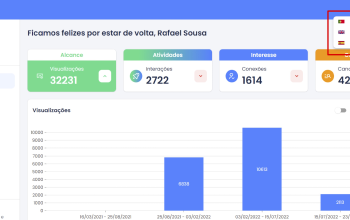L10n – What You Need to Know
Maybe you've come across the terms L10n and i18n and are wondering what they mean.
These abbreviations stand for Localization (L10n) and Internationalization (i18n) in the context of software development.
They are crucial if you plan to offer your products or services in multiple countries, as they ensure that your offerings are linguistically and culturally adapted to the respective markets.
They help you tailor your offerings to the cultural and linguistic requirements of your target markets, enabling you to successfully enter new markets.
What is L10n?
L10n is short for "Localization," where the "L" stands for the first and the "n" for the last letter of the English word "Localization," while the number "10" represents the number of letters between the two.
Localization refers to adapting a product or service to meet the cultural, linguistic, and other local requirements of a specific market or region.
It’s not just about translating text but comprehensively adjusting to cultural norms, local laws, currency units, date and time formats, measurement units, and many other aspects to make your offerings accessible and relevant to your target audience.
L10n, and thus localization, is an essential part of globalization as it enables you and your company to reach an international audience by maximizing the user experience.

An Example:
With Localization L10n, you don’t just translate all the content of your website for the UK market, but you also adjust graphics, colors, and symbols that may have different meanings in the UK than in other countries.
Moreover, you add legal notices and privacy policies that comply with British laws.
Another critical aspect of L10n is cultural sensitivity. This means designing your content to respect and reflect the values, beliefs, and practices of your target audience.
For example, certain images or symbols considered polite in one culture might be viewed as rude or offensive in another. It may also be necessary to change or remove specific topics or content that are acceptable in one culture but not in another.
Advantages of L10n
Now that you know what L10n is, let's briefly discuss the advantages of localization before we move on to i18n.
Your benefits with L10n:
- You can enter new markets and expand the reach of your offerings.
- You ensure a better user experience and increase customer satisfaction.
- You gain a competitive edge as localized sites appear more professional and appealing to target audiences.
- Your market perception becomes more positive as you cater to the needs and preferences of your international customers.
- You build a foundation for better market positioning, increasing sales and revenue.
- You ensure compliance with all local legal and regulatory requirements, reducing the risk of penalties.
What Is Needed for L10n?
To successfully implement L10n, you'll first need a professional translator and linguist who not only perfectly understands the target market’s language but also has an understanding of cultural nuances and local customs.
Just as important:
Use appropriate tools and technologies that support the localization process. These include Translation Management Systems that store and reuse already translated texts and software that manages the entire terminology, ensuring consistent use of technical terms.
Also necessary is a structured, internationalized codebase to adapt to different languages and regions without requiring extensive technical changes.
To fully leverage the benefits of L10n, multiple departments need to collaborate, including developers, designers, product managers, and marketing experts. This ensures that all aspects of the product – from the user interface to technical functionality to marketing messages – are fully aligned with the needs of your target market.
Finally, don’t forget to establish quality assurance measures to ensure a local, accessible experience.
What is the Difference Between i18n and L10n?
i18n and L10n are two related but different concepts in adapting products and services for various markets. i18n stands for "Internationalization" (from the English "Internationalization"), with the "i" and "n" representing the first and last letters of the word, and the number "18" indicating the number of letters between them.
Internationalization refers to designing a product or service so that it can easily be adapted for different languages and regions without requiring significant code changes.
This includes separating linguistic content from the program code, supporting multiple writing systems, and adapting functions to accommodate different cultural, legal, and technical requirements.
L10n, or "Localization," as previously defined, refers to the actual adaptation of the product or service to the specific linguistic, cultural, and legal requirements of a particular market.
While internationalization creates the framework for localization to take place, localization focuses on the actual implementation of these adjustments for a specific market.
Simply put: Internationalization is the preparation, and localization is the execution.
Additional Resources
➡️ Create a free account to explore our software for your business.
➡️ Learn more about the concept of Localization.



